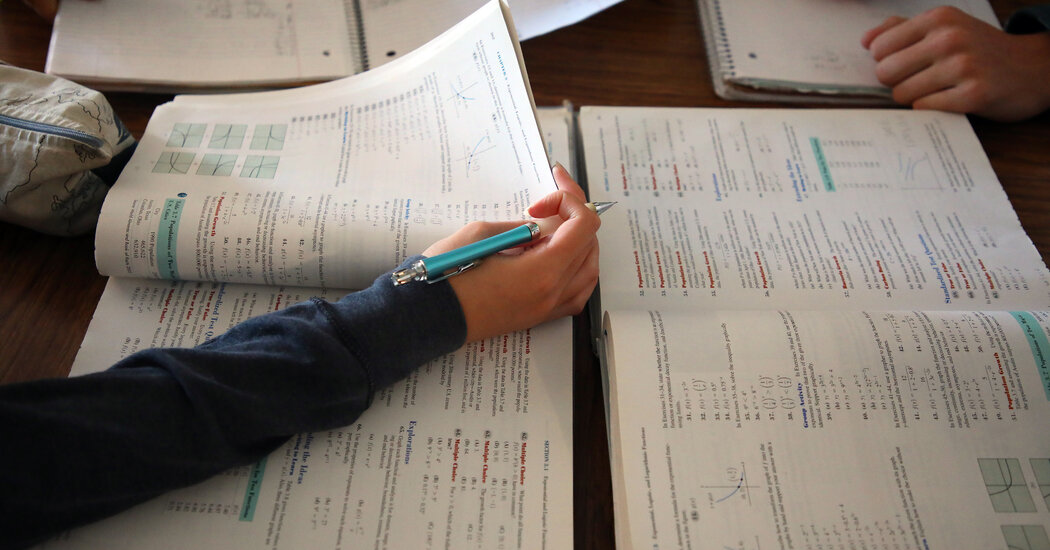Schools Got a Record $190 Billion in Pandemic Aid. Did It Work?
For the last three years, U.S. schools have been in an unusual position: They had lots of money to spend.
The federal government invested $190 billion in pandemic aid for schools; the largest chunk, $122 billion, came in 2021 to help students recover. Altogether, it was the largest one-time federal investment in American education, but it came with a major question: Would it work?
Two separate studies, released on Wednesday, suggest that the money helped, but not as much as it could have.
“The money did contribute to the recovery,” said Thomas J. Kane, an economist at Harvard University, who helped lead one of the studies. “Could the money have had a bigger impact? Yes.”
The studies — one from researchers at Harvard, Stanford and Dartmouth, and the other from the University of Washington — reached similar conclusions based on test results from the 2022-23 school year for third- through eighth-grade students in about 30 states. For every $1,000 in federal aid spent, districts saw a small improvement in math and reading scores.
The Biden administration celebrated the results as proof that the federal government’s investment in March 2021, when the pandemic was still active and some schools remained closed, helped put students back on track. “This new data makes clear that the president’s investment in education helped millions of students regain ground faster,” said Neera Tanden, President Biden’s domestic policy adviser.
The overall bang for buck, though, was modest, according to economists and education policy experts. Past research has found a greater return on the dollar from smaller class sizes, for example.
There may be other benefits not reflected in test scores, such as improved mental health for students, said Douglas N. Harris, an economist at Tulane University who was not involved in the research.
Based on test scores alone, he said, “it doesn’t pass the cost-benefit test.”
In a country of nearly 50 million public school children, it’s difficult to achieve large results at scale. And even small improvements in test scores can have long-term benefits, increasing students’ future earnings.
But the overall results raise questions about whether the record amount of federal aid came with appropriate levels of oversight.
Congress put few restrictions on the largest round of funding. Of $122 billion, districts were required to spend just 20 percent on academic recovery, which many education experts have criticized as too little.
“Had there been more pressure around academic achievement, and using the money for that purpose and more guide rails, I think it’s possible the money could have made a much bigger difference,” said Dan Goldhaber, a co-author on the University of Washington study and a vice president with the American Institutes for Research.
The Biden administration has said the money was meant to give school districts important flexibility to respond to local needs in a time of crisis. It has focused on issuing guidance to districts, emphasizing the need to invest in tutoring and summer school, for example.
But with more than 13,000 school districts across the country, and few outright requirements, there was huge variation in how money was spent.
Some districts went all in on frequent, small group tutoring, which research has shown to be effective. Many hired new people: teachers, counselors and social workers. Others financed school building renovations. Still others, facing budget problems, used much of the money for their regular operations and are now facing tough cuts.
The new studies did not evaluate which strategies won better results, in part because there was little tracking of how, exactly, the federal dollars were spent.
Other research suggests that choices mattered. Some districts have shown outsize improvements, often by focusing on research-backed academic interventions and student mental health.
In the end, though, many students are not on pace to catch up from pandemic learning losses, especially because the federal aid expires this upcoming school year.
Still, education experts said, the money did move the needle. Without federal aid, students may have stayed further behind. The aid was targeted at low-income school districts, which suffered larger losses during the pandemic and remote learning.
“The dollars were effective in helping to close some of the gaps that opened up,” Professor Kane said.
And test scores may still yet improve, as schools reap the benefits of long-term investments, like HVAC upgrades and cleaner air, said Rebecca Sibilia, the executive director of EdFund, a research and policy group focused on school finance.
A large body of research shows that increased spending on education is associated with improved student outcomes, especially for students from low-income families.
In some ways, the results only underscore the sheer magnitude of the pandemic’s effects on students, who fell far behind, especially in math.
At the current pace of recovery, the studies suggest it would have taken as much as five times more in federal aid for all students to fully catch up.

